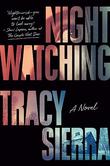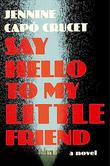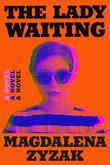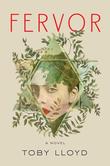
by Lily King ‧ RELEASE DATE: June 3, 2014
A small gem, disturbing and haunting.
Awards & Accolades
Our Verdict

GET IT
Kirkus Reviews'
Best Books Of 2014
Kirkus Prize
winner
National Book Critics Circle Finalist
King (Father of the Rain, 2010, etc.) changes the names (and the outcome) in this atmospheric romantic fiction set in New Guinea and clearly based on anthropologist Margaret Mead’s relationship with her second and third husbands, R.F. Fortune and Gregory Bateson—neither a slouch in his own right.
In the early 1930s, Nell and Fen are married anthropologists in New Guinea. American Nell has already published a controversial best-seller about Samoan child-rearing while Australian Fen has published only a monograph on Dobu island sorcery. Their marriage is in trouble: Nell holds Fen responsible for her recent miscarriage; he resents her fame and financial success. Shortly after leaving the Mumbanyo tribe they have been studying (and which Nell has grown to abhor), they run into British anthropologist Bankson, who is researching another tribal village, the Nengai, along the Sepik River. Deeply depressed—he's recently attempted suicide—Bankson is haunted by the deaths of his older brothers and his scientist father’s disappointment in him for practicing what is considered a soft science. Also deeply lonely, Bankson offers to find Nell and Fen an interesting tribe to study to keep them nearby. Soon the couple is happily ensconced with the Tam, whose women surprise Nell with their assertiveness. While the attraction, both physical and intellectual, between Bankson and Nell is obvious, Fen also offers Bankson tender care, which threatens to go beyond friendship, when Bankson falls ill. At first, the three-way connection is uniting and stimulating. But as Nell’s and Bankson’s feelings for each other develop, sexual tensions grow. So do the differences between Fen’s and Nell’s views on the anthropologist’s role. While Bankson increasingly shares Nell’s empathetic approach, Fen plots to retrieve an artifact from the Mumbanyo to cement his career. King does not shy from showing the uncomfortable relationship among all three anthropologists and those they study. Particularly upsetting is the portrait of a Tam who returns “civilized” after working in a copper mine.
A small gem, disturbing and haunting.Pub Date: June 3, 2014
ISBN: 978-0-8021-2255-1
Page Count: 272
Publisher: Atlantic Monthly
Review Posted Online: March 28, 2014
Kirkus Reviews Issue: April 15, 2014
Share your opinion of this book
More by Lily King
BOOK REVIEW
by Lily King
BOOK REVIEW
by Lily King
BOOK REVIEW
by Lily King

by Georgia Hunter ‧ RELEASE DATE: Feb. 14, 2017
Too beholden to sentimentality and cliché, this novel fails to establish a uniquely realized perspective.
Hunter’s debut novel tracks the experiences of her family members during the Holocaust.
Sol and Nechuma Kurc, wealthy, cultured Jews in Radom, Poland, are successful shop owners; they and their grown children live a comfortable lifestyle. But that lifestyle is no protection against the onslaught of the Holocaust, which eventually scatters the members of the Kurc family among several continents. Genek, the oldest son, is exiled with his wife to a Siberian gulag. Halina, youngest of all the children, works to protect her family alongside her resistance-fighter husband. Addy, middle child, a composer and engineer before the war breaks out, leaves Europe on one of the last passenger ships, ending up thousands of miles away. Then, too, there are Mila and Felicia, Jakob and Bella, each with their own share of struggles—pain endured, horrors witnessed. Hunter conducted extensive research after learning that her grandfather (Addy in the book) survived the Holocaust. The research shows: her novel is thorough and precise in its details. It’s less precise in its language, however, which frequently relies on cliché. “You’ll get only one shot at this,” Halina thinks, enacting a plan to save her husband. “Don’t botch it.” Later, Genek, confronting a routine bit of paperwork, must decide whether or not to hide his Jewishness. “That form is a deal breaker,” he tells himself. “It’s life and death.” And: “They are low, it seems, on good fortune. And something tells him they’ll need it.” Worse than these stale phrases, though, are the moments when Hunter’s writing is entirely inadequate for the subject matter at hand. Genek, describing the gulag, calls the nearest town “a total shitscape.” This is a low point for Hunter’s writing; elsewhere in the novel, it’s stronger. Still, the characters remain flat and unknowable, while the novel itself is predictable. At this point, more than half a century’s worth of fiction and film has been inspired by the Holocaust—a weighty and imposing tradition. Hunter, it seems, hasn’t been able to break free from her dependence on it.
Too beholden to sentimentality and cliché, this novel fails to establish a uniquely realized perspective.Pub Date: Feb. 14, 2017
ISBN: 978-0-399-56308-9
Page Count: 416
Publisher: Viking
Review Posted Online: Nov. 21, 2016
Kirkus Reviews Issue: Dec. 1, 2016
Share your opinion of this book
More About This Book
BOOK TO SCREEN

by Heather Morris ‧ RELEASE DATE: Sept. 4, 2018
The writing is merely serviceable, and one can’t help but wish the author had found a way to present her material as...
Awards & Accolades
Likes

26
Our Verdict

GET IT
New York Times Bestseller
IndieBound Bestseller
An unlikely love story set amid the horrors of a Nazi death camp.
Based on real people and events, this debut novel follows Lale Sokolov, a young Slovakian Jew sent to Auschwitz in 1942. There, he assumes the heinous task of tattooing incoming Jewish prisoners with the dehumanizing numbers their SS captors use to identify them. When the Tätowierer, as he is called, meets fellow prisoner Gita Furman, 17, he is immediately smitten. Eventually, the attraction becomes mutual. Lale proves himself an operator, at once cagey and courageous: As the Tätowierer, he is granted special privileges and manages to smuggle food to starving prisoners. Through female prisoners who catalog the belongings confiscated from fellow inmates, Lale gains access to jewels, which he trades to a pair of local villagers for chocolate, medicine, and other items. Meanwhile, despite overwhelming odds, Lale and Gita are able to meet privately from time to time and become lovers. In 1944, just ahead of the arrival of Russian troops, Lale and Gita separately leave the concentration camp and experience harrowingly close calls. Suffice it to say they both survive. To her credit, the author doesn’t flinch from describing the depravity of the SS in Auschwitz and the unimaginable suffering of their victims—no gauzy evasions here, as in Boy in the Striped Pajamas. She also manages to raise, if not really explore, some trickier issues—the guilt of those Jews, like the tattooist, who survived by doing the Nazis’ bidding, in a sense betraying their fellow Jews; and the complicity of those non-Jews, like the Slovaks in Lale’s hometown, who failed to come to the aid of their beleaguered countrymen.
The writing is merely serviceable, and one can’t help but wish the author had found a way to present her material as nonfiction. Still, this is a powerful, gut-wrenching tale that is hard to shake off.Pub Date: Sept. 4, 2018
ISBN: 978-0-06-279715-5
Page Count: 272
Publisher: Harper/HarperCollins
Review Posted Online: July 16, 2018
Kirkus Reviews Issue: Aug. 1, 2018
Share your opinion of this book
© Copyright 2024 Kirkus Media LLC. All Rights Reserved.
Hey there, book lover.
We’re glad you found a book that interests you!
We can’t wait for you to join Kirkus!
It’s free and takes less than 10 seconds!
Already have an account? Log in.
OR
Trouble signing in? Retrieve credentials.
Welcome Back!
OR
Trouble signing in? Retrieve credentials.
Don’t fret. We’ll find you.





